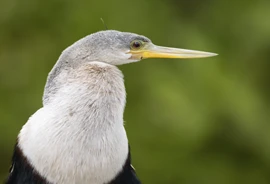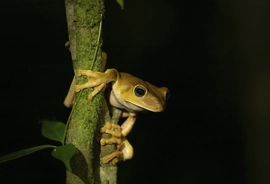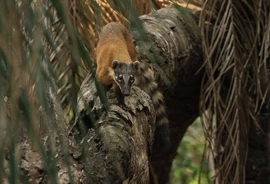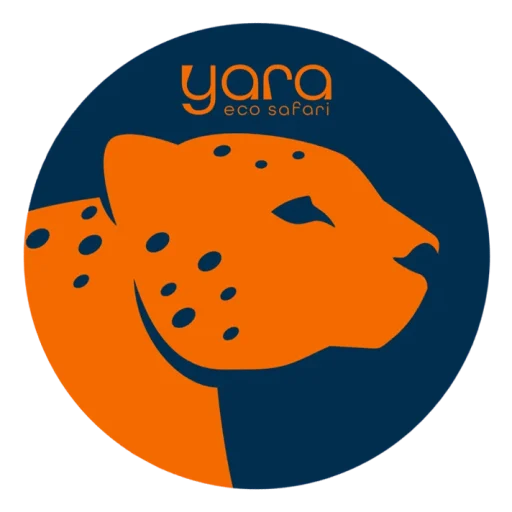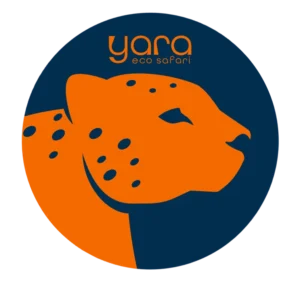Pantanal

Biome
Natural Heritage of Humanity
Ecology
The Pantanal is a true paradise of biodiversity. The harmonious interaction between living beings and the environment makes this a unique place in the world.
Largest wetland of the world
Pantanal
An Ecosystem in Constant Transformation
The Dynamics of the Seasons in the Pantanal
The Pantanal is a biome characterized by its unique water dynamics, with a flooding and drainage system that is highly dependent on seasonal rainfall. During the rainy season, between November and March, the waters of the rivers that run through the region overflow, flooding large areas of the plains. This flooding creates a landscape of vast flooded fields, which attract a huge diversity of fauna and flora.
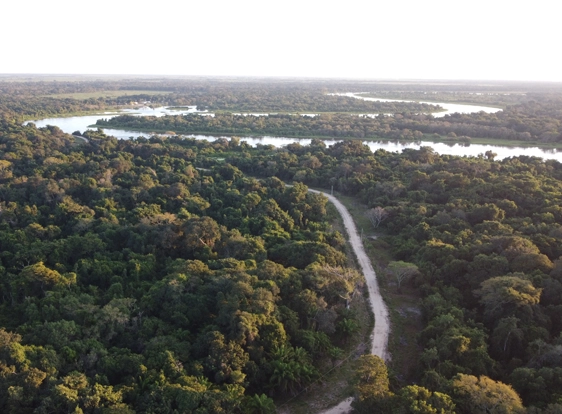
When to Visit the Pantanal?
Each season of the year brings a unique experience and presents its own challenges. The rainy season offers lush scenery, but it is more difficult to find jaguars. The dry season offers better chances of sightings, although there are more tourists and boats.
🌱 April to June - Transition from Rain to Dry Season
- Lush vegetation and rivers still full.
- Great abundance of birds and jaguars.
- More intimate experience, with fewer boats on the river.
- Dense vegetation and swollen rivers make the search for jaguars more challenging.
- Fewer boats on the river means fewer chances for shared sightings.
🌞 July to September - Best Time to Spot Jaguars
- Dry period: animals concentrate on the river banks.
- Greater chance of encountering jaguars.
- More information sharing between boats via radio.
- Drier and less lush vegetation.
- Greater flow of tourists and boats on the river.
🍃 October and November - The Rebirth of Nature
- The onset of the rainy season leaves the vegetation vibrant.
- Beginning of bird migration and mammal mating period.
- The jaguars begin to move to more remote areas.
- Increased rainfall may impact some activities.
🌧️ January to March - The Flooded Pantanal
- Formation of large flooded areas, essential for the ecosystem.
- Expanding biodiversity with regenerating fauna and flora.
- Roads may become flooded, making access difficult.
- Jaguar sightings.
How to get to the Pantanal?
See the detailed route from Cuiabá Airport to Porto Jofre on the map.
What to Take to the Pantanal?
- Lightweight clothing with UV protection
- Long pants and shirts
- Sunscreen
- Water bottle
- Insect repellent
- Hat or cap
- Sunglasses
- Binoculars
- Camera
- Medications for continuous use
- Raincoat
- Windbreaker jacket
- Comfortable shoes
Animals
Main species that illustrate the diversity and beauty of the Pantanal ecosystem.
MAMMAL
Jaguar
Tap to see more
Jaguar
(Panthera jaguar)
BIRD
Jabiru Stork
Tap to see more
Jabiru Stork
(Jabiru mycteria)
REPTILE
Caiman
Tap to see more
Caiman (Caiman yacare)
MAMMAL
Capybara
Tap to see more
Capybara (Hydrochoerus hydrochaeris)
MAMMAL
Giant otter
Tap to see more
Giant Otter (Pteronura brasiliensis)
MAMMAL
Tapir
Tap to see more
Tapir (Tapirus terrestris)
REPTILE
Anaconda
Tap to see more
Anaconda (Eunectes notaeus)
MAMMAL
Marsh Deer
Tap to see more
Marsh Deer (Blastocerus dichotomus)
